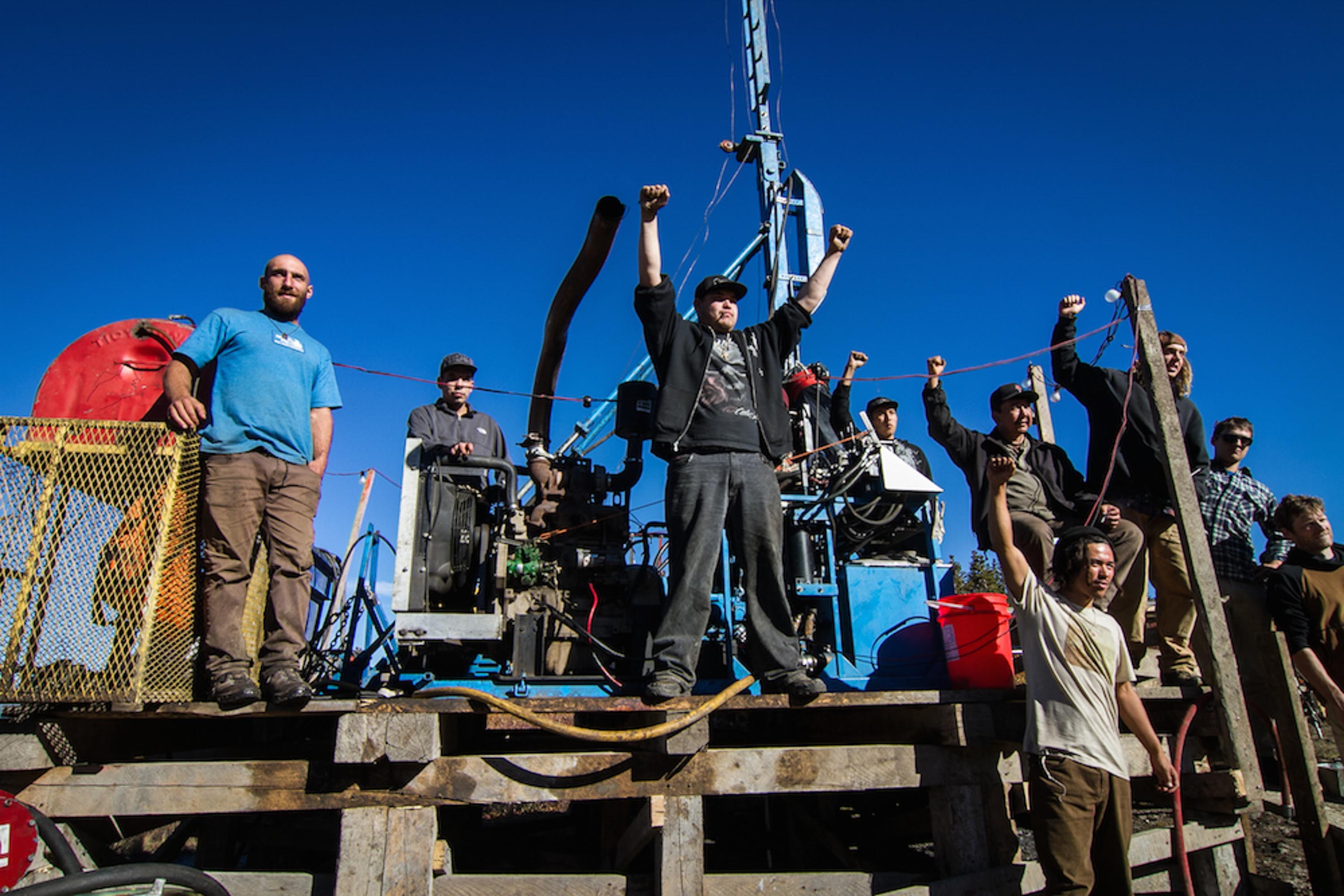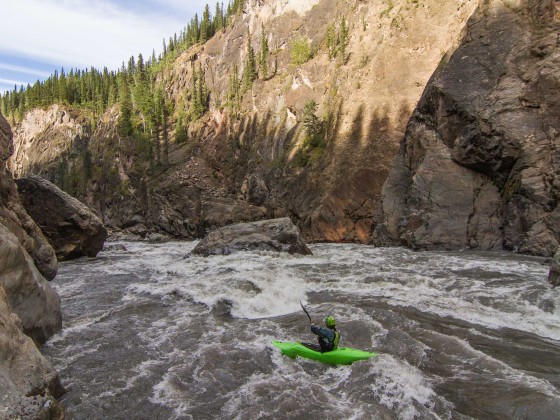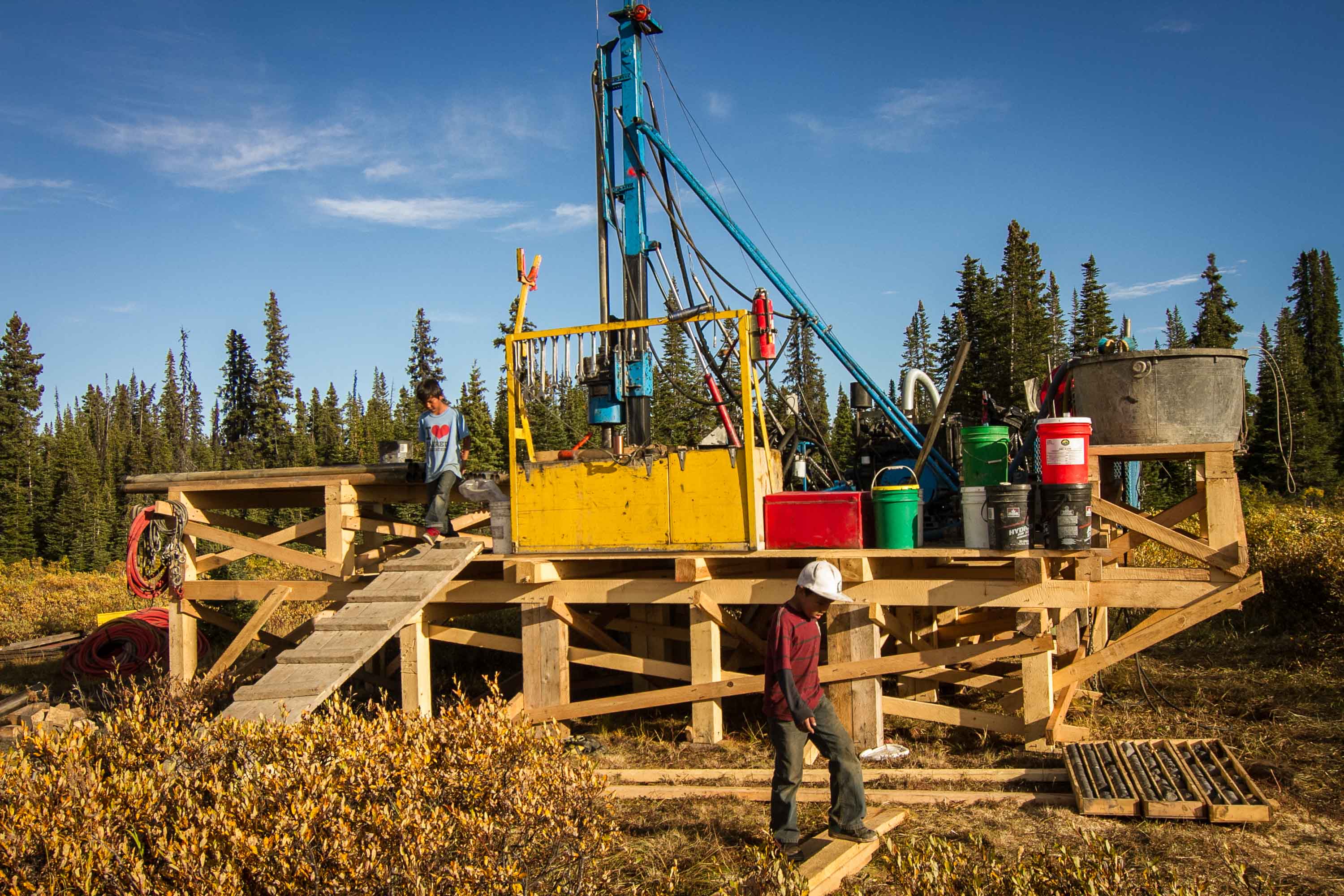The Sacred Headwaters
A journey to kayak the Stikine and protect the land
The Sacred Headwaters (Klabona) is the name given by the local indigenous Tahltan people to the remote and pristine valley where three of Canada’s most important salmon rivers are born: the Stikine, Skeena, and Nass.
It is sometimes referred to as the “Serengeti of Canada” because of the abundance of wildlife that inhabit the area, including: the largest population of stone sheep in the world, grizzly bears, wolves, and caribou. Still, owing to its relative isolation, the Sacred Headwaters is not well-known to the rest of the world, except perhaps among the whitewater kayaking community, where the Stikine is one of those few rivers held in an almost mythical regard.
In 2004, Shell Canada — now Royal Dutch Shell, the second largest oil and gas company in the world — received a 400,000 hectare tenure from the BC government to extract coal bed methane (CBM) from the heart of the Sacred Headwaters. The process involves drilling thousands of wells to remove toxic groundwater — which in itself is a major issue as it needs to be properly managed — and fracking, a controversial method of resource extraction that involves injecting highly toxic fluids into the ground. The Klabona Keepers — “an organization of Tahltan elders and families who occupy and use traditional lands near Iskut, BC” — began a blockade in 2005, camping out for months and preventing Shell’s heavy machinery access to the only road into the Sacred Headwaters. Police eventually arrested 15 protesters — 9 of them Tahltan elders — but this didn’t end the actions to stop Shell from going ahead. Media attention around the world grew resulting in increased opposition and protesting from many sides, and in 2008 the BC government slapped a four year moratorium on Shell’s activities in the region. Over that time the pressure kept mounting for the government to permanently put an end to Shell’s activities, which they did at the end of 2012, officially banning all future oil and gas development in the Sacred Headwaters. This was a massive victory that started with a small and passionate community going against one of the largest companies on the planet.
Although there was success in stopping oil and gas development in this wild environment, there are still industrial threats that will impact the ecology and the people that rely on the land to live. Imperial Metals operates the Red Chris mine — an open-pit copper and gold mine — in the region. This is the same company responsible for the Mount Polley mine environmental disaster in August 2014 in another area of BC in which a dam containing the mine’s tailing pond (mining waste that’s dumped into a lake) broke and released the toxic slurry into nearby fresh-water sources. It’s cited by environmental experts as “one of the worst tailing pond breaches in the world.” This is among the biggest fears for the Red Chris mine.
Furthermore, Fortune Metals is also in the area with designs to operate an open pit anthracite coal mine. They have drilling rigs onsite for exploration, but the Tahltan have been successful in disrupting their activities and they continue the fight — with the support of many other First Nations communities around the province — to remove the company from the Sacred Headwaters. In May, 2015 the provincial government (through its Crown corporation BC Rail) purchased 61 coal licenses at a cost of $18.3 million from Fortune Minerals and POSCO Canada to stem the conflict: The Tahltan can now veto development of any of the 61 licenses. As part of the deal the developers can buy back the licenses in the next 10 years at the original cost if they are able to come to an agreement with the Tahltan.
Perhaps the most public and well-known figure embedded in the fight to protect the Klabona is author and anthropologist Wade Davis, who has resided and raised his family in the midst of this special region. As an Explorer-in-Residence with National Geographic, he says that the Sacred Headwaters is “a landscape that is as beautiful as anything I’ve ever seen, in my experience…going to as many as 30 countries a year.”

He equates extracting resources from this environmentally important area to “drilling for oil in the Sistine chapel.” It was his book, Sacred Headwaters: The Fight to Save the Stikine, Skeena, and Nass — with its stunning photos from some of the best landscape photographers in the world — and his talks on platforms such as TED and CBC radio that inspired me to look more closely at this ecologically and culturally sensitive part of BC.
I came across two videos (below) by Brendan and Todd Wells, kayaking brothers and owners of the Mountain Mind Collective production company. With Brendan narrating, they not only put together some adrenaline-inducing footage of white-water kayaking but also paint a beautiful portrait of the Sacred Headwaters and, through their interactions with the Tahltan, express what all of this means to them. Brendan took some time to share their experiences.
MATADOR: You said you were 14 or 15 when you first heard of the Stikine River and its place in the kayaking world. At that time did you know anything about the environment it’s in (the Sacred Headwaters) and the fight that’s ongoing to protect it? How did your knowledge of this progress over the years before you got to visit when you were 19?
BW: When I first heard about the Stikine River, I had no idea that it was located in an environment so rich in biodiversity, cultural history, and massive deposits of highly sought after natural resources such as coal, natural gas, gold, copper, silver, and hydro-power. I didn’t know anything about the fight to protect the Sacred Headwaters until the year before I first went to the Stikine. My brother and film co-producer Todd spent time with Wade Davis and others working on a National Geographic project in the Sacred Headwaters. I learned a lot hearing Todd’s stories, but it wasn’t until I saw what was going on firsthand that I began to research the history of the ongoing fight, and become more involved with the battle to protect the Sacred Headwaters.
From a kayaker’s perspective, what does it mean to protect areas such as this? In other words, why did you choose to focus so much on the efforts to protect this land, rather than just producing a straight up kayaking video?
I strive to balance my work as a film producer, kayaker, and activist as equally as I can. As a kayaker, I have an intimate connection with rivers and a unique understanding of the important role that watersheds play in the greater ecosystem. There are many battles to choose as an environmental activist, but protecting watersheds are number one for me. It’s a very tangible fight, and there’s nothing more rewarding than to see your efforts pay off. For kayakers in general, the recreational opportunities are very apparent – the Stikine is hands down one of the most magical rivers in the world, but the paddling community is also very aware of the greater importance of the river — from the salmon runs to the prime mountain goat habitat — that the Stikine provides. I especially wanted to work on this film as more and more paddlers venture to the Stikine every year, and very few of them know about what’s going on in the area. After driving thousands of miles just to paddle one river, it really is worth it to go explore the Sacred Headwaters and show some support, even if it is just briefly stopping by a blockade site.
Tell us a little about your first impressions as you approached the Sacred Headwaters. What are some lasting impressions that the area and the people who inhabit it left you with?
Compassion and care comes to mind right away. Everyone fighting for the Sacred Headwaters took us in with open arms, fed us, and gave us the best hospitality I could ask for. I learned so much from just my few days at Beauty Camp and the Red Chris blockade. The Sacred Headwaters is the perfect example of a beneficial reciprocal relationship; the Headwaters has cared for and provided the Tahltan people with food and shelter for time immemorial, and as long as the land is cared for, protected, and treated with respect, that relationship will continue indefinitely.
In episode 1 you mention that the locals had taken over a Fortune Minerals exploratory drilling rig. What exactly does it mean to “take over” in this context?
Under the mining act, the drill operators are not allowed to operate the rig if there are civilians within 50 meters of the rig for safety purposes. By standing within that 50-meter zone, the drill operators were forced to shut down the rig and stop their work. We used the same tactic on the second drill rig, although the operators disregarded the safety regulation and continued their work until they were done for the night. We were all threatened by the RCMP with getting charged with “mischief” for not allowing the drill operators to continue their work, although they did for over an hour that we were within the 50-meter zone.
You were also on hand and participated in taking over the second drilling rig. How did this unfold? What was the process, and was it peaceful or were there heated exchanges?
The fight to protect the Sacred Headwaters has been non-violent and peaceful, despite occasionally being provoked by employees of the mining companies. One of the drill operators of the second rig lit two cigarettes at once and mooned us for a while, but other than that, and getting threatened by the RCMP of being charged with “mischief,” the second takeover went well and we kept a peaceful attitude and environment.
From talking with the local indigenous people, what would you say is the sense of hope in regards to successfully protecting the Sacred Headwaters?
It is a very, very complicated issue in the local community, as well as the broader Tahltan community. There are few people that stand strictly on one side of the table or the other. I would say most people agree that some development is needed in the area, but there are also areas that need to be protected. I think that there is a lot of hope that locals will begin to have more input in what development projects are to be undertaken, and who will be benefiting from or impacted by development projects is taken into better consideration.
What would be your advice to readers just learning about this, about how they can get involved and show their support in keeping this area pristine?
Ithink that helping to spread awareness about this fight is the first step to making positive change. Similar struggles are going on everywhere, and the more people that know about them, the more likely that people will stand up and speak out in opposition to unnecessary and detrimental development projects. Spread the word and help educate each other! Also don’t be afraid to get directly involved; I’ve made many good friends and found some amazing opportunities by randomly showing up at Beauty Camp in 2013. Last, the Klabona Keepers are in the midst of a fundraising campaign to help cover their legal fees of going to court against Imperial Metals.
How can one visit to see and experience this themselves?
Any and all support is greatly needed and appreciated in this, and other similar fights. Facebook has been a great tool to organize people and raise awareness, and organizations like the Klabona Keepers and Beyond Boarding are great sources for people to get involved. There have been recent fights throughout British Columbia, including the recent blockade of the Kinder Morgan pipeline by First Nations, Burnaby residents, and many others got involved. Showing strong numbers at blockades and protests goes a long way.
What’s next for you? Will you continue to stay on top of what’s happening there? If so, how?
I plan to return to the Stikine River every year that I can, and this year I am planning on spending more time than I ever have in the past in Northern British Columba and Alaska. I’m particularly attracted to these areas because they are currently very pristine, and I believe they should be kept that way. From dams to massive mines, the B.C. government and large international companies are aggressively pursuing natural resource exploitation throughout B.C. and Alaska. It seems as though we haven’t learned from mistakes made in the past, and I don’t want to see the salmon runs go nearly extinct and the riparian ecosystem deteriorate like it has in much of the lower 48 and parts of British Columbia. My goal is to explore as many different rivers as possible, while continuing to raise awareness of environmental threats and issues as well as sustainable development through intriguing films.





